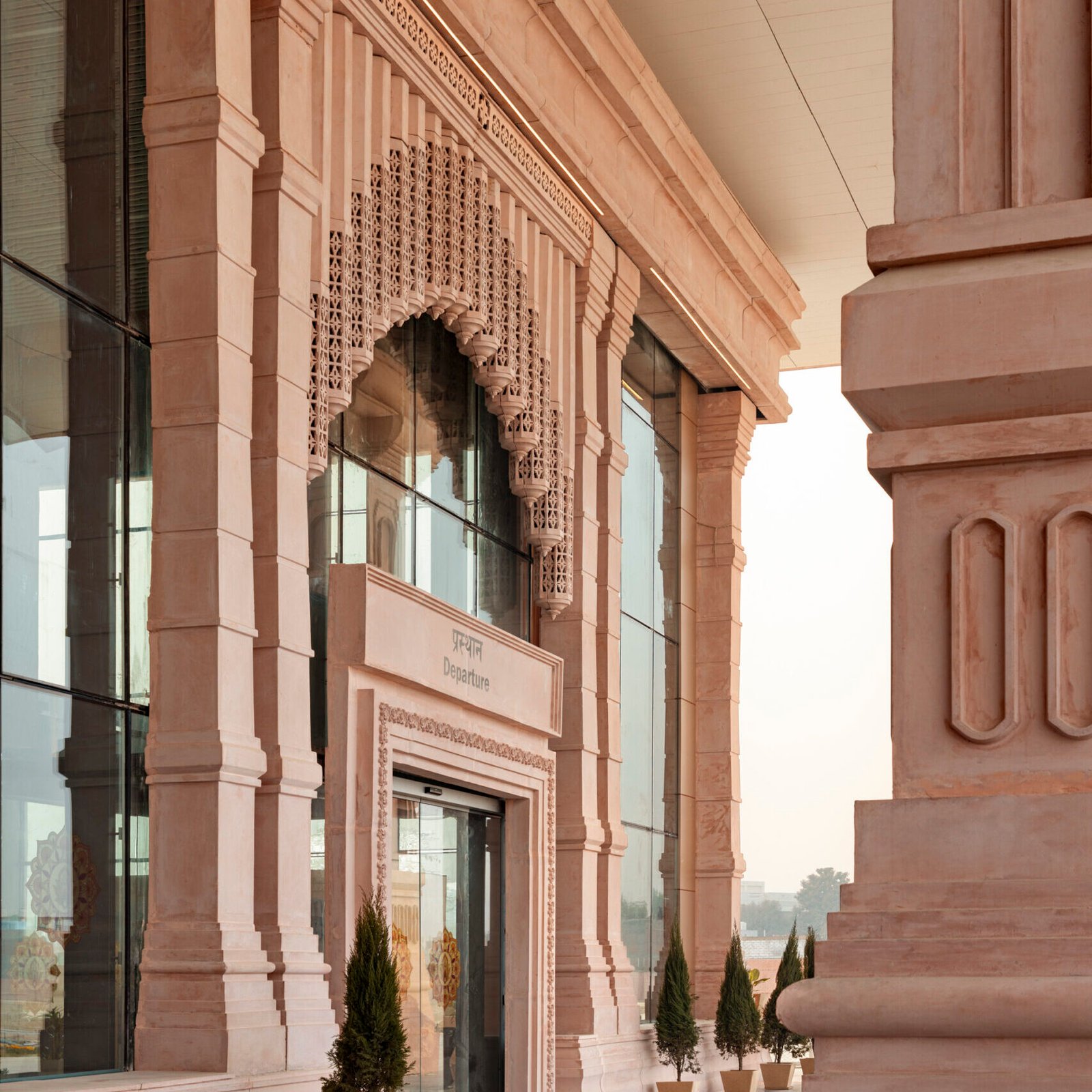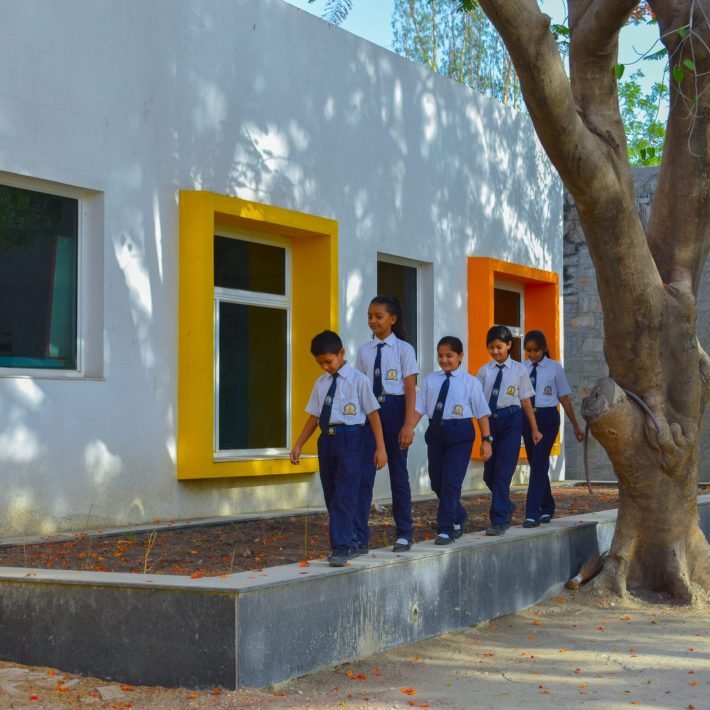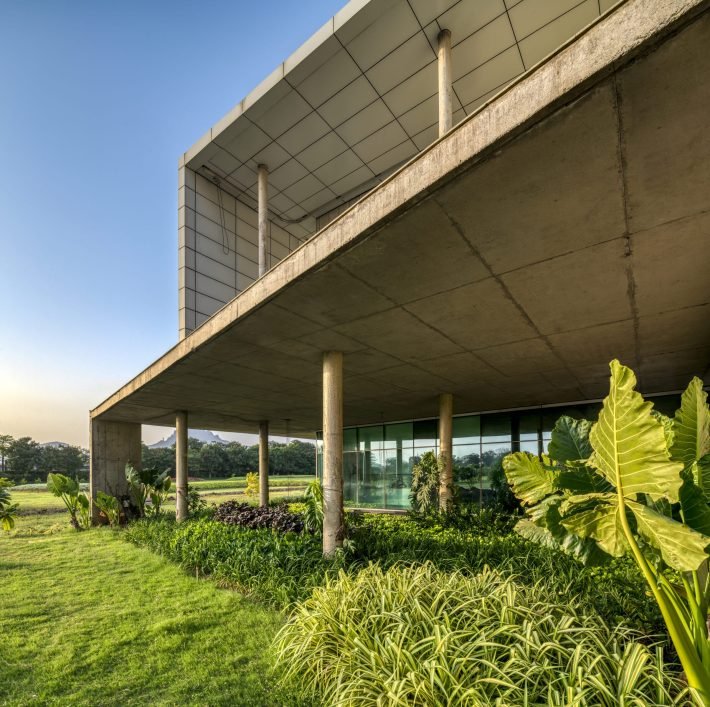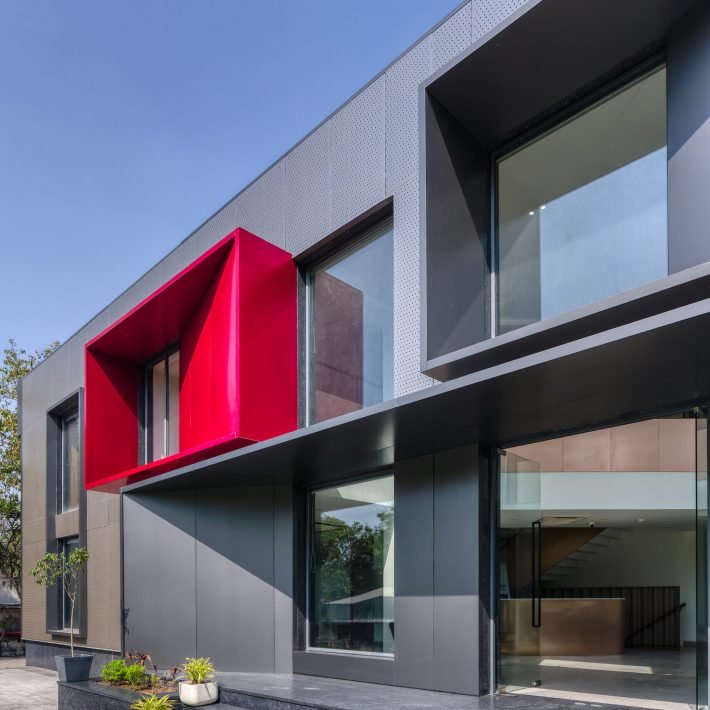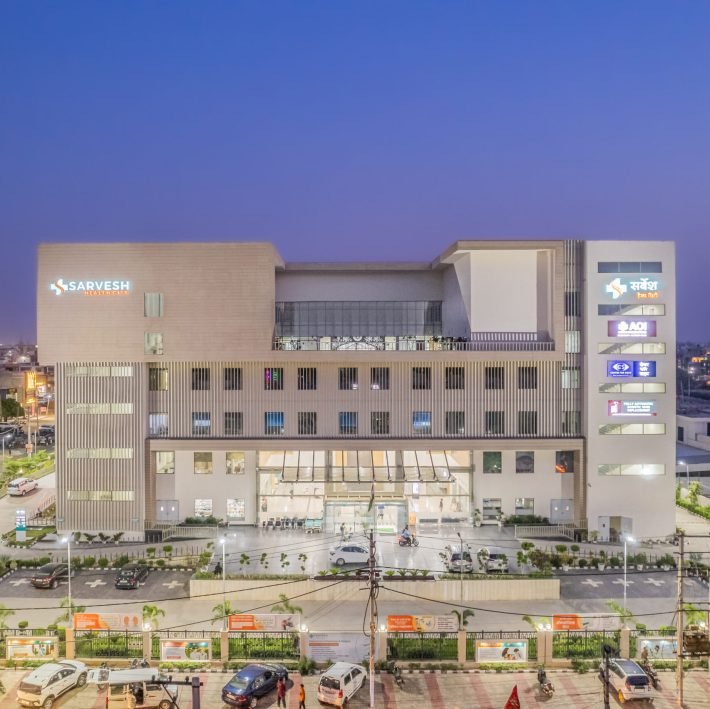STHAPATI architects have designed the Maharishi Valmiki International Airport, an infrastructural marvel now boasting a GRIHA 4-Star Certification. It serves as a beacon of India’s dedication to sustainability in aviation, ushering in a new era of environmentally conscious infrastructure.
STHAPATI, a prominent architectural firm based in Lucknow and New Delhi, is renowned for its expertise in airport terminals, public transportation infrastructure, and heritage conservation. With a distinguished portfolio spanning the globe, STHAPATI is dedicated to crafting architectural marvels that echo India’s cultural and social tapestry. Their latest project, the Maharishi Valmiki International Airport in Ayodhya, sets a new standard for growth in Tier 2 cities, emphasizing connectivity and cultural enrichment.
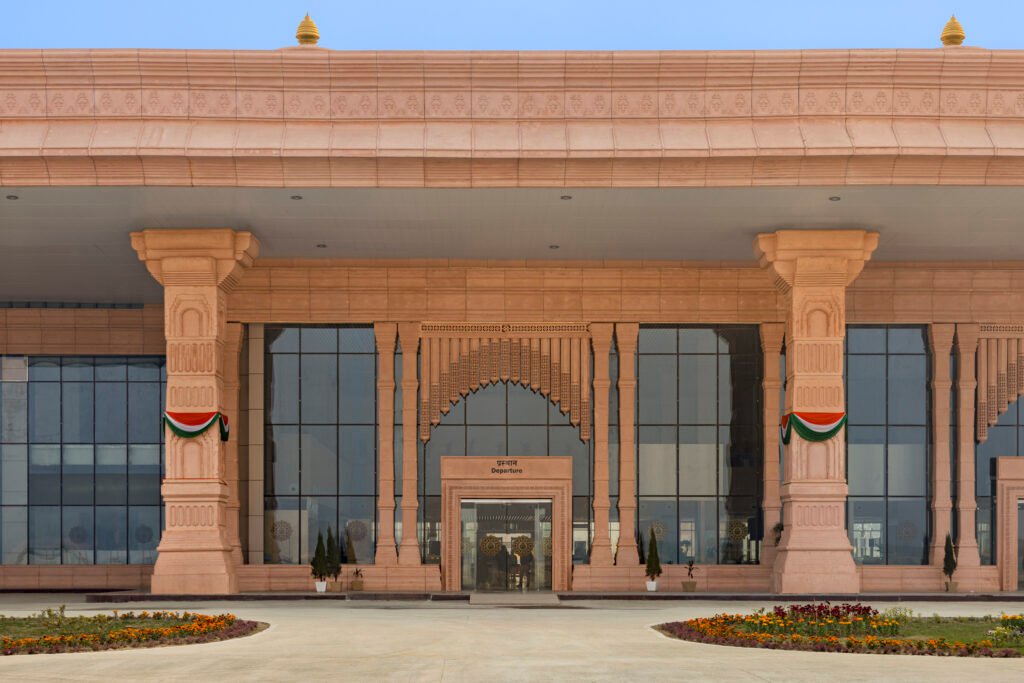
In the heart of India, the recently inaugurated Maharishi Valmiki International Airport isn’t just a transportation hub; it’s a living testament to the nation’s cultural richness. Departing from the conventional glass box architecture, each facet of the airport, from its towering roof to the intricate columns, has a historical and spiritual significance. The airport’s architecture weaves together history, tradition, sustainable practices, and mythological stories —a deliberate departure from minimalism and the coming together of cultural expression and modern innovation. Adding his insight on the design and planning, Harsh Varshneya, Principal Architect, STHAPATI says, “An airport is more than just a transit hub; it’s a microcosm of a city, where diverse cultures converge and interact. Its design should celebrate this diversity and promote a sense of global connectivity.”
He further adds, “Ayodhya Airport’s concept and design are rooted in the city’s rich heritage and cultural significance. They aim to create a gateway that not only facilitates travel but also reflects the city’s identity. The airport’s design concept involves blending modern aviation infrastructure with traditional architectural elements inspired by Ayodhya’s historical and mythological importance. This approach ensures that the airport meets functional requirements and resonates with the city’s cultural narrative. The airport’s layout and amenities are carefully planned to enhance the travel experience, making it more than just a transit hub but a destination in itself.”
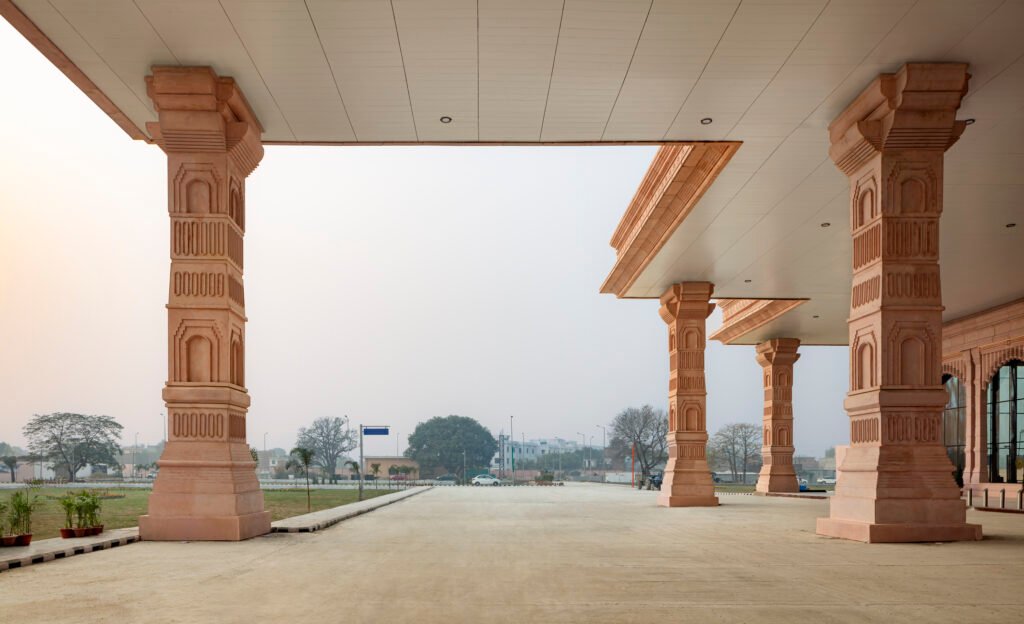
In a departure from minimalism, it captures the essence of India’s vibrant history, fostering a revival of local artistry. The airport embodies a commitment to sustainability through modern advancements while providing a platform for traditional craftsmanship to thrive. It’s a harmonious integration of the old and the new, a beacon of cultural resurgence in modern India.
As we look to the future, airports in Tier 2 Indian cities like Ayodhya reshape economic landscapes. No longer relegated to the shadows, the Ayodhya airport emerges as a connectivity hub, poised to drive economic self-sufficiency. Beyond being a transportation node, the airport becomes a catalyst for change and growth. In this journey, Ayodhya Airport isn’t just about connecting flights; it’s about connecting communities, elevating economic growth, and weaving a narrative of empowerment for the entire region.
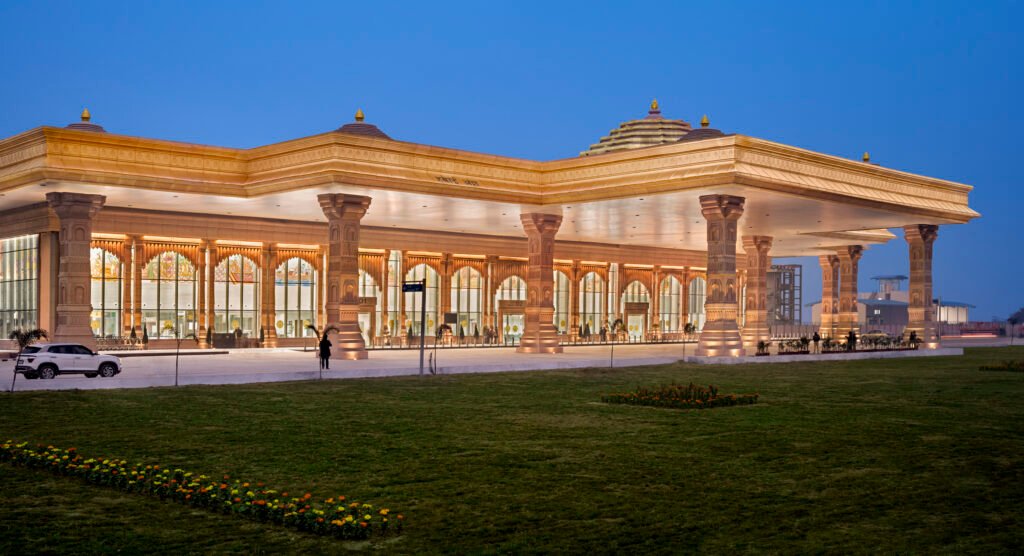
The Ayodhya Airport emerges as an infrastructural marvel and a promise of holistic community development and cultural enrichment. Beyond its physical dimensions, the airport, with its GRIHA 4-Star Certification, stands as a testament to India’s commitment to sustainable practices, heralding a new era in environmentally conscious aviation.
With a focus on improving connectivity, the Ayodhya Airport is strategically located to facilitate travel for devotees and tourists. For the last decade, India has seen unprecedented growth in aviation traffic and infrastructure. Ayodhya Airport is the newest milestone in this journey. The airport has over 100 aircraft with a peak-hour capacity of 750+ passengers, catering to a large population and accommodating the continuous expected growth. A two-storeyed structure, the Ayodhya Airport is adorned with elevational elements depicting the sacred city’s rich history. The ground floor invites passengers with expansive amenities, and the airport operations are carried out from the first floor.
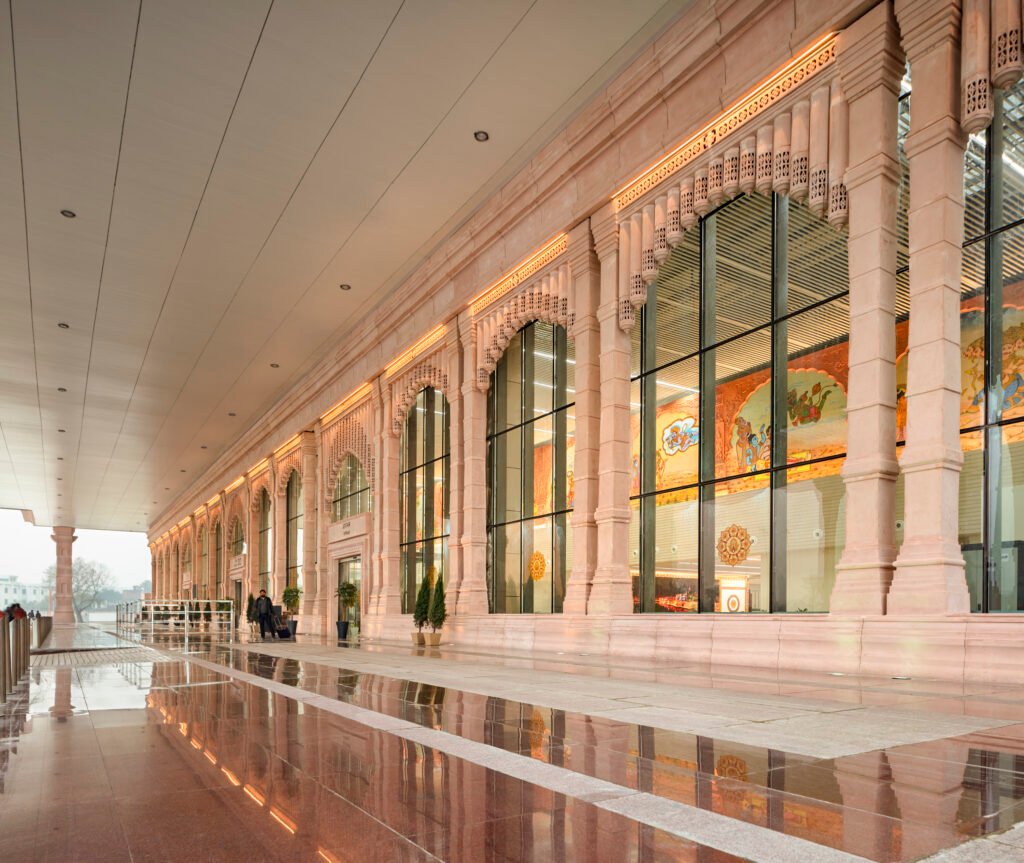
With a cost of INR 250 CR, the building is inspired by the gradual elevation of the mandapas and the Nagara style of temple architecture prevalent in Northern India. The airport helps with better connectivity across India and is specifically designed to enhance the visitor and devotees’ experience while reflecting Ayodhya’s heritage.
The Ayodhya Airport Integrates the Historic City’s Heritage Into the Architecture.
At the main entrance of Ayodhya Airport, a grand stepped shikar stands tall, adorned with brass. This architectural masterpiece follows the Nagara style, outlined with scriptures, presenting a majestic and culturally rich welcome to the passengers. The city’s heritage and story unfold through intricate columns, each laden with profound symbolism. The mega columns supporting the terminal roof symbolise the Kandas of Ramayana, blending cultural richness into the airport’s architecture. The Khandika, symbolising impermanence, coexists with the Deva Gana Patta, embodying divine features. Every column narrates a story of dedication, courage, and spirituality, weaving the city’s essence into the very fabric of the airport. The ‘Toran dwars’ stand out remarkably, especially at eye level. As people stroll by, they effortlessly command attention, truly captivating the onlookers. These intricately adorned entrances serve as a nod to mythological references, creating a symbolic connection to the region’s rich heritage.
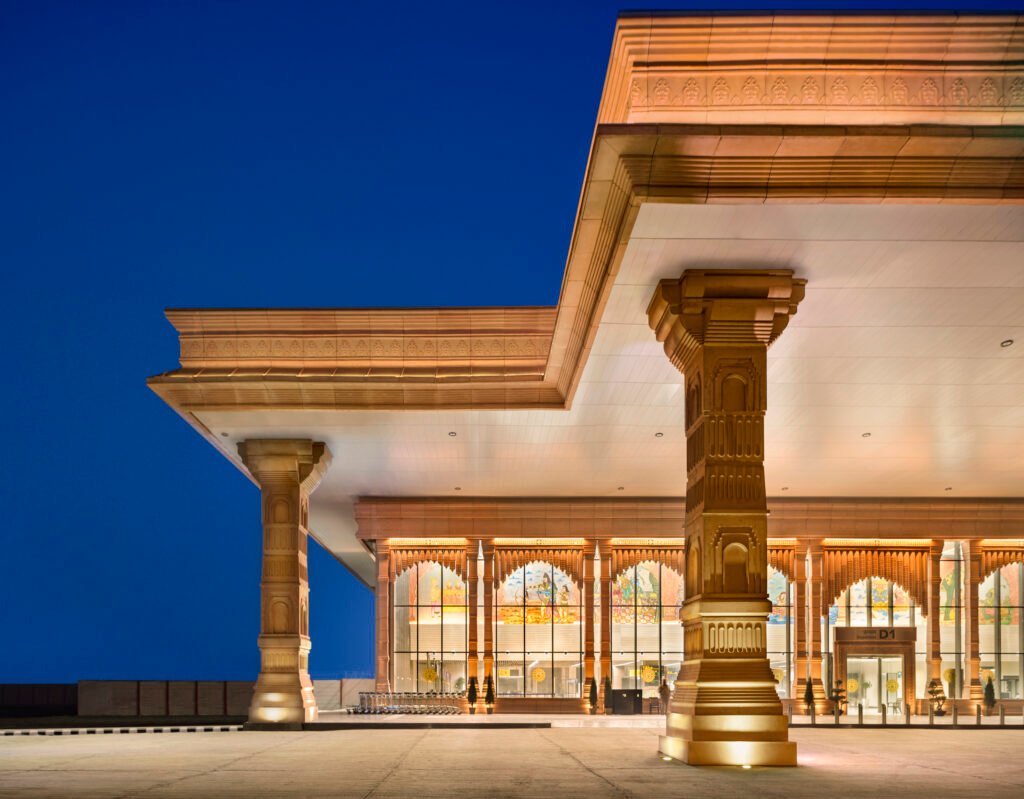
The Airport’s Artistic Immersion Includes Symbolic Murals and Artwork from the Ramayana. The terminal building is a canvas of profound messages. The Bow and Arrow mural symbolises the courage to confront untruth, while hexagonal light particles embody the eternal triumph of truth over hierarchy. From arrivals to skylights, artworks intricately depict the timeless tale of Lord Ram from the Ramayana, creating an immersive, sensory-rich experience beyond traditional airport designs. Strategically placed skylights serve as guiding beacons, enhancing wayfinding and offering a sensory experience for passengers.
The Ayodhya Airport Pushes for Innovation in Tier 2 Cities With Sustainable and Environmentally Conscious Design. Embracing carbon neutrality with eco-conscious GRC materials, the design pioneers sustainable practices in aviation. Ornamental work, meticulously crafted in Glass Fiber Reinforced Concrete (GRC) after extensive research and technical precision, replaces traditional stone facades and significantly contributes to environmental sustainability, resulting in substantial carbon emission reduction.
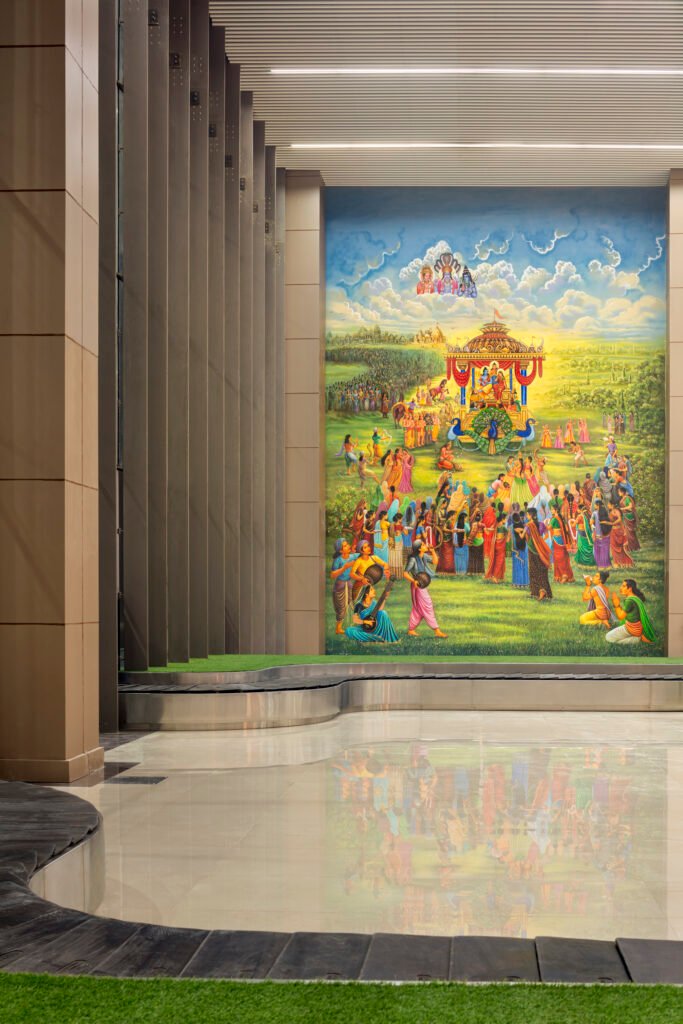
The Airport is Boosting Local and National Connectivity. Anticipating a surge in tourism, the Ayodhya Airport’s passenger terminal accommodates 150 arrivals and departures simultaneously. The Airport is poised to transcend the ordinary, mirroring the cultural opulence of Ayodhya and redefining contemporary airports to authentically embody the city’s identity – a symbol of pride for the aviation industry. For the devotees and pilgrims who will tread the corridors of Ayodhya Airport, the journey is physical and spiritual. The airport is strategically designed to further develop Ayodhya as one of the world’s largest pilgrimage centers, providing seamless connectivity and making the journey to Ayodhya more accessible and enriching for pilgrims.
The Airport is Creating Jobs and Boosting the Local Economy in Ayodhya.
The impact of the Ayodhya Airport transcends its architectural and cultural dimensions. It catalyzes economic growth in the region. Projections indicate the creation of at least 500 jobs annually, offering tangible benefits to the local community. This isn’t just about connectivity, it’s about fostering sustainable livelihoods and empowering the region with economic opportunities that reverberate beyond the terminal gates.
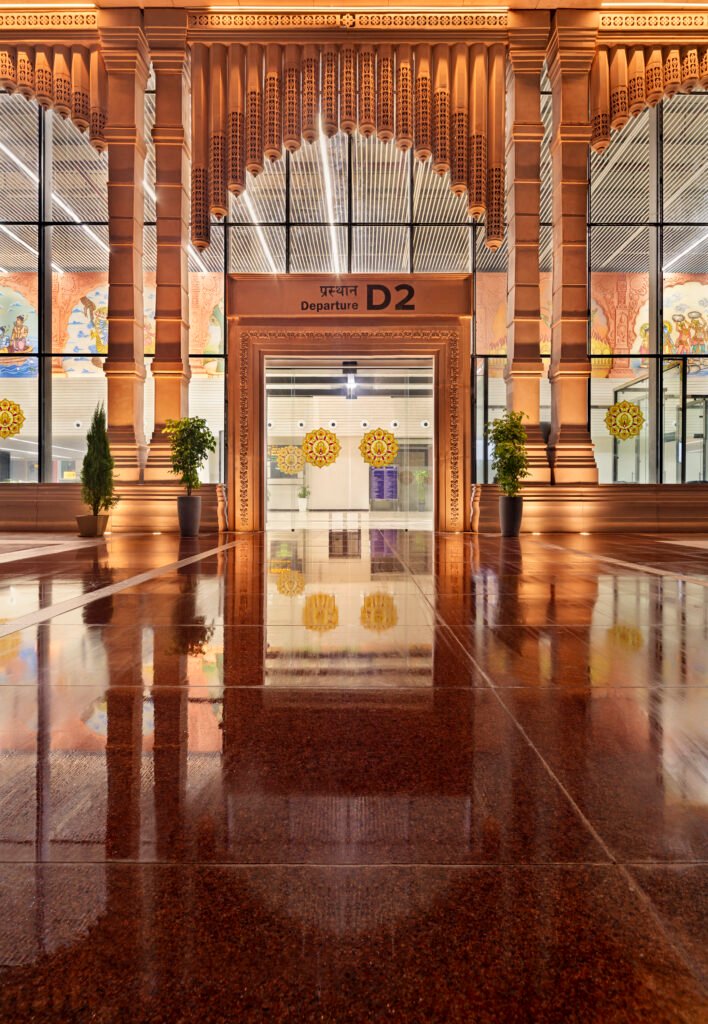
This transformative project was meticulously designed and implemented by STHAPATI, a New Delhi and Lucknow-based architectural practice renowned for its prowess in airport design and heritage conservation. With a track record of successfully restoring significant sites across India, including airports in Leh, Jodhpur, and Jammu, STHAPATI brings unparalleled expertise to Ayodhya.
The Ayodhya Airport is not just an infrastructural marvel. It promises seamless connectivity, sustainable practices, and economic prosperity for the historical city of Ayodhya.
Credits:
Design and Architecture: STHAPATI.
Built-up Area: 8,000 Sqm
Master Plan Area: 336.59 Acres
Cost: 250 Crores
Design Team: Vipul B. Varshneya, Harsh Varshneya, Khushboo Bansal, Anuj Varshneya, Manish Gupta, in collaboration with the Airport Authority of India (AAI) and their planning and design team.
Photography: NOUGHTS AND CROSSES


